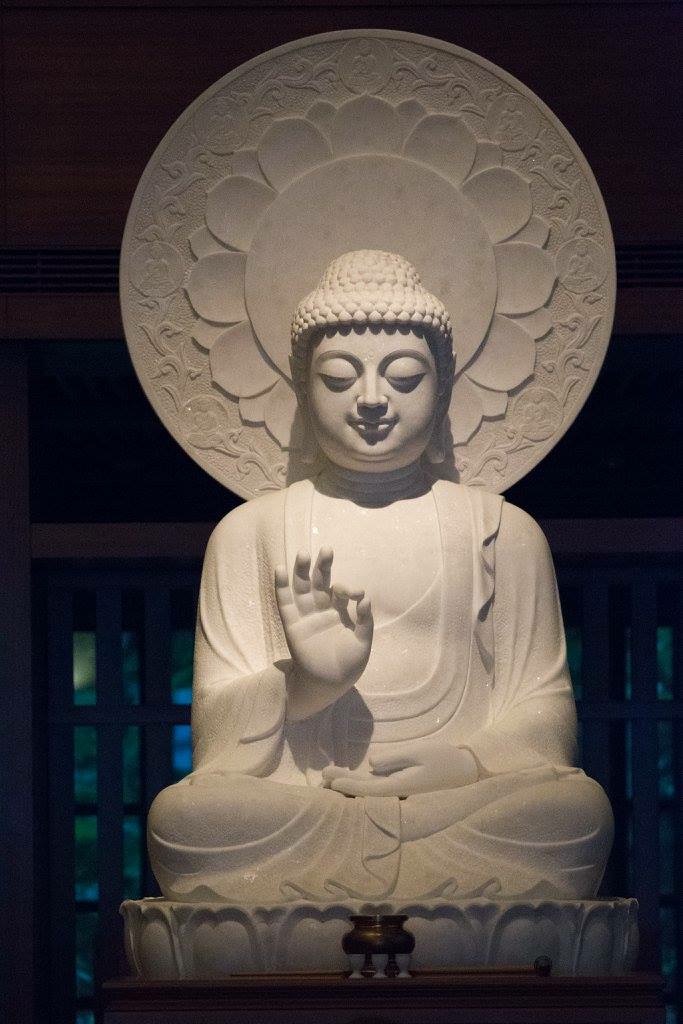Special Topics
Why Do Buddhists Need Buddha Statues?

The origin of Buddha statues can be traced back to the time of the Gautama Buddha. It was said that the Buddha once ascended to the Trayastrimsa heaven to teach the Dharma to his mother, Mayadevi, and was absent from the earthly world for three months. As the Buddha and his teachings were missed by his disciples, King Udayana employed sculptors to construct a five-foot-high statue of the Buddha from Candana wood. Upon completion, King Udayana paid respect to this statue every day, akin to paying respect to the Buddha when he was teaching on earth. Perhaps what the legend tries to convey is the followers' deep desire to have the Buddha in presence all the time.
Remembering the Merits and Virtues of the Buddha
About a hundred years after the Buddha's passing (parinirvana), devotees began to use various items and objects, such as the Dharma wheel, the Bodhi tree, and stupas to symbolize the Buddha and his teachings. These objects serve as a reminder of the Buddha's merits and virtues.
Many Buddhists worship Buddha statues as if these statues are deities; This is not to be harshly scolded off, for the Dharma body of the Buddha and Bodhisattvas is ever-present, responding to those seeking assistance. This kind of mindset is at the stage of "having faith". However, from the perspective of right view and practice, Buddha statues are tools for Buddhist practitioners to practice.
Many Buddhists worship Buddha statues as if these statues are deities; This is not to be harshly scolded off, for the Dharma body of the Buddha and Bodhisattvas is ever-present, responding to those seeking assistance. This kind of mindset is at the stage of "having faith". However, from the perspective of right view and practice, Buddha statues are tools for Buddhist practitioners to practice.
Revering the Buddha Statue as if in the Presence of the Buddha
Worshipping a Buddha statue, be it made from wood, bronze, or clay, is akin to paying respect to the Buddha. When we prostrate in front of a Buddha statue, we prostrate with the intention to remind ourselves of the great vows and deeds of the Buddhas and Bodhisattvas. We remind ourselves to practice diligently and to follow the examples set by these Buddhas and Bodhisattva throughout our journey on the Bodhi path. This is the true meaning of worshiping the Buddha statues.
By prostrating to the images of the Buddha, we strengthen our faith in the great vows of the Buddhas and Bodhisattvas; this gives rise to faith, respect, gratitude, remorse, and repentance. Therefore, the root of our practice is not the images or statues itself, but the introspection during prostration. Our body and mind become clear, adaptable, and humble. The moment when we prostrate to the images of the Buddha is the moment when we prostrate to the Buddhahood in our self-nature.
By prostrating to the images of the Buddha, we strengthen our faith in the great vows of the Buddhas and Bodhisattvas; this gives rise to faith, respect, gratitude, remorse, and repentance. Therefore, the root of our practice is not the images or statues itself, but the introspection during prostration. Our body and mind become clear, adaptable, and humble. The moment when we prostrate to the images of the Buddha is the moment when we prostrate to the Buddhahood in our self-nature.
